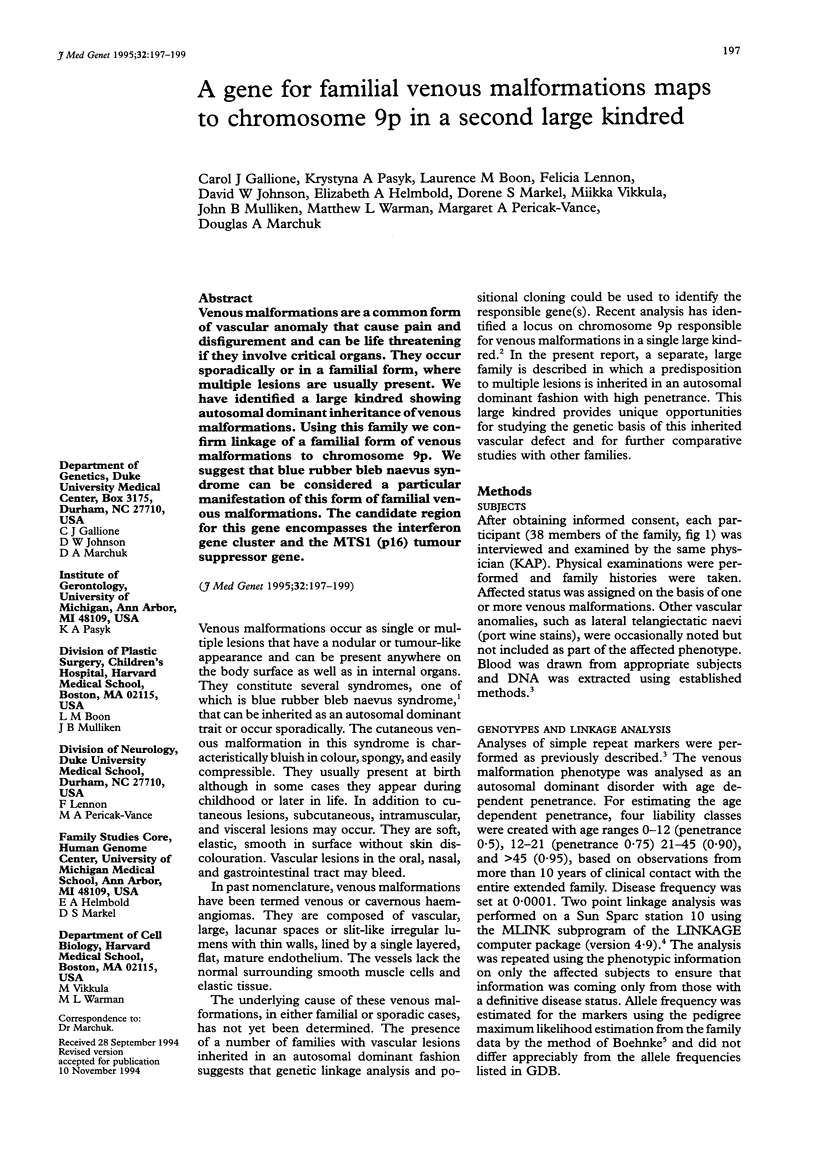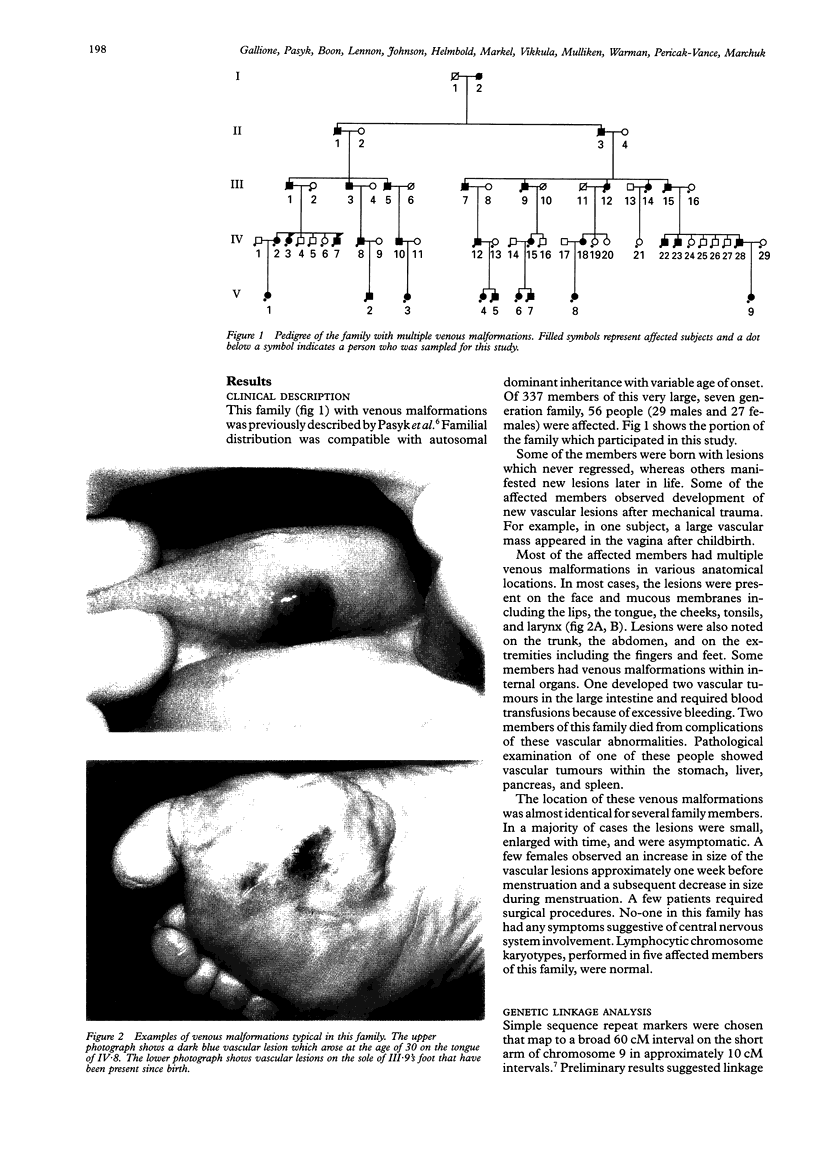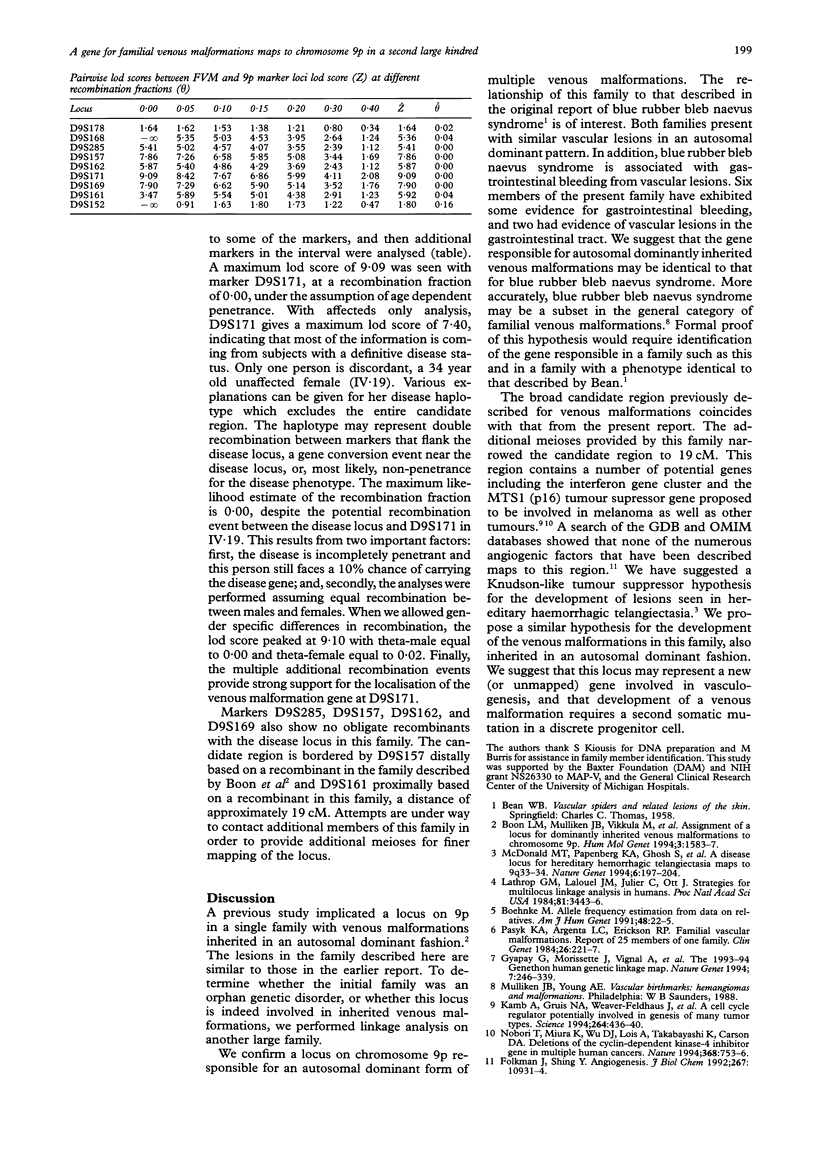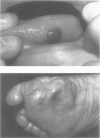Abstract
Venous malformations are a common form of vascular anomaly that cause pain and disfigurement and can be life threatening if they involve critical organs. They occur sporadically or in a familial form, where multiple lesions are usually present. We have identified a large kindred showing autosomal dominant inheritance of venous malformations. Using this family we confirm linkage of a familial form of venous malformations to chromosome 9p. We suggest that blue rubber bleb naevus syndrome can be considered a particular manifestation of this form of familial venous malformations. The candidate region for this gene encompasses the interferon gene cluster and the MTS1 (p16) tumour suppressor gene.
Full text
PDF


Images in this article
Selected References
These references are in PubMed. This may not be the complete list of references from this article.
- Boon L. M., Mulliken J. B., Vikkula M., Watkins H., Seidman J., Olsen B. R., Warman M. L. Assignment of a locus for dominantly inherited venous malformations to chromosome 9p. Hum Mol Genet. 1994 Sep;3(9):1583–1587. doi: 10.1093/hmg/3.9.1583. [DOI] [PubMed] [Google Scholar]
- Folkman J., Shing Y. Angiogenesis. J Biol Chem. 1992 Jun 5;267(16):10931–10934. [PubMed] [Google Scholar]
- Gyapay G., Morissette J., Vignal A., Dib C., Fizames C., Millasseau P., Marc S., Bernardi G., Lathrop M., Weissenbach J. The 1993-94 Généthon human genetic linkage map. Nat Genet. 1994 Jun;7(2 Spec No):246–339. doi: 10.1038/ng0694supp-246. [DOI] [PubMed] [Google Scholar]
- Kamb A., Gruis N. A., Weaver-Feldhaus J., Liu Q., Harshman K., Tavtigian S. V., Stockert E., Day R. S., 3rd, Johnson B. E., Skolnick M. H. A cell cycle regulator potentially involved in genesis of many tumor types. Science. 1994 Apr 15;264(5157):436–440. doi: 10.1126/science.8153634. [DOI] [PubMed] [Google Scholar]
- Lathrop G. M., Lalouel J. M., Julier C., Ott J. Strategies for multilocus linkage analysis in humans. Proc Natl Acad Sci U S A. 1984 Jun;81(11):3443–3446. doi: 10.1073/pnas.81.11.3443. [DOI] [PMC free article] [PubMed] [Google Scholar]
- McDonald M. T., Papenberg K. A., Ghosh S., Glatfelter A. A., Biesecker B. B., Helmbold E. A., Markel D. S., Zolotor A., McKinnon W. C., Vanderstoep J. L. A disease locus for hereditary haemorrhagic telangiectasia maps to chromosome 9q33-34. Nat Genet. 1994 Feb;6(2):197–204. doi: 10.1038/ng0294-197. [DOI] [PubMed] [Google Scholar]
- Nobori T., Miura K., Wu D. J., Lois A., Takabayashi K., Carson D. A. Deletions of the cyclin-dependent kinase-4 inhibitor gene in multiple human cancers. Nature. 1994 Apr 21;368(6473):753–756. doi: 10.1038/368753a0. [DOI] [PubMed] [Google Scholar]
- Pasyk K. A., Argenta L. C., Erickson R. P. Familial vascular malformations. Report of 25 members of one family. Clin Genet. 1984 Sep;26(3):221–227. [PubMed] [Google Scholar]



